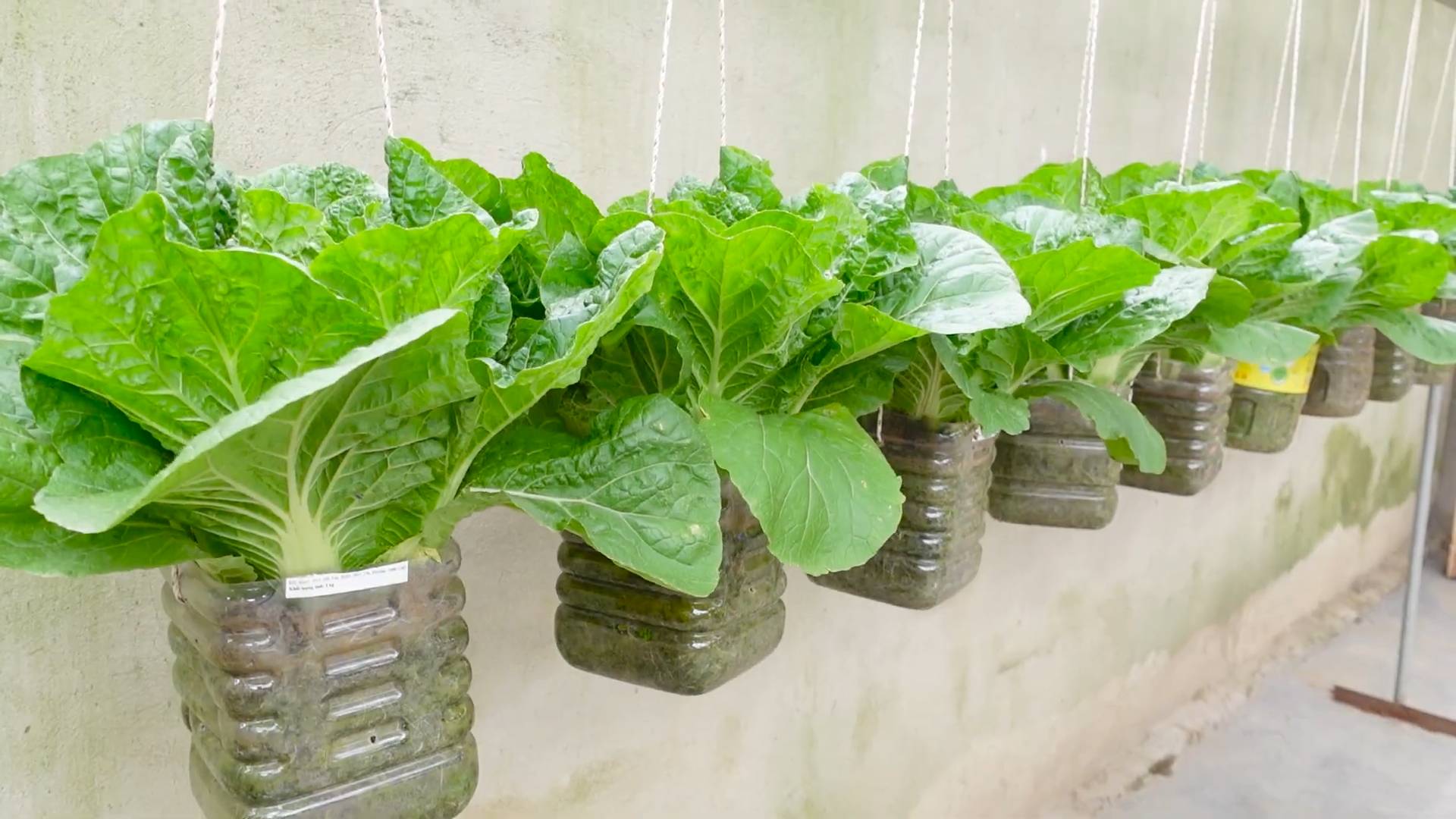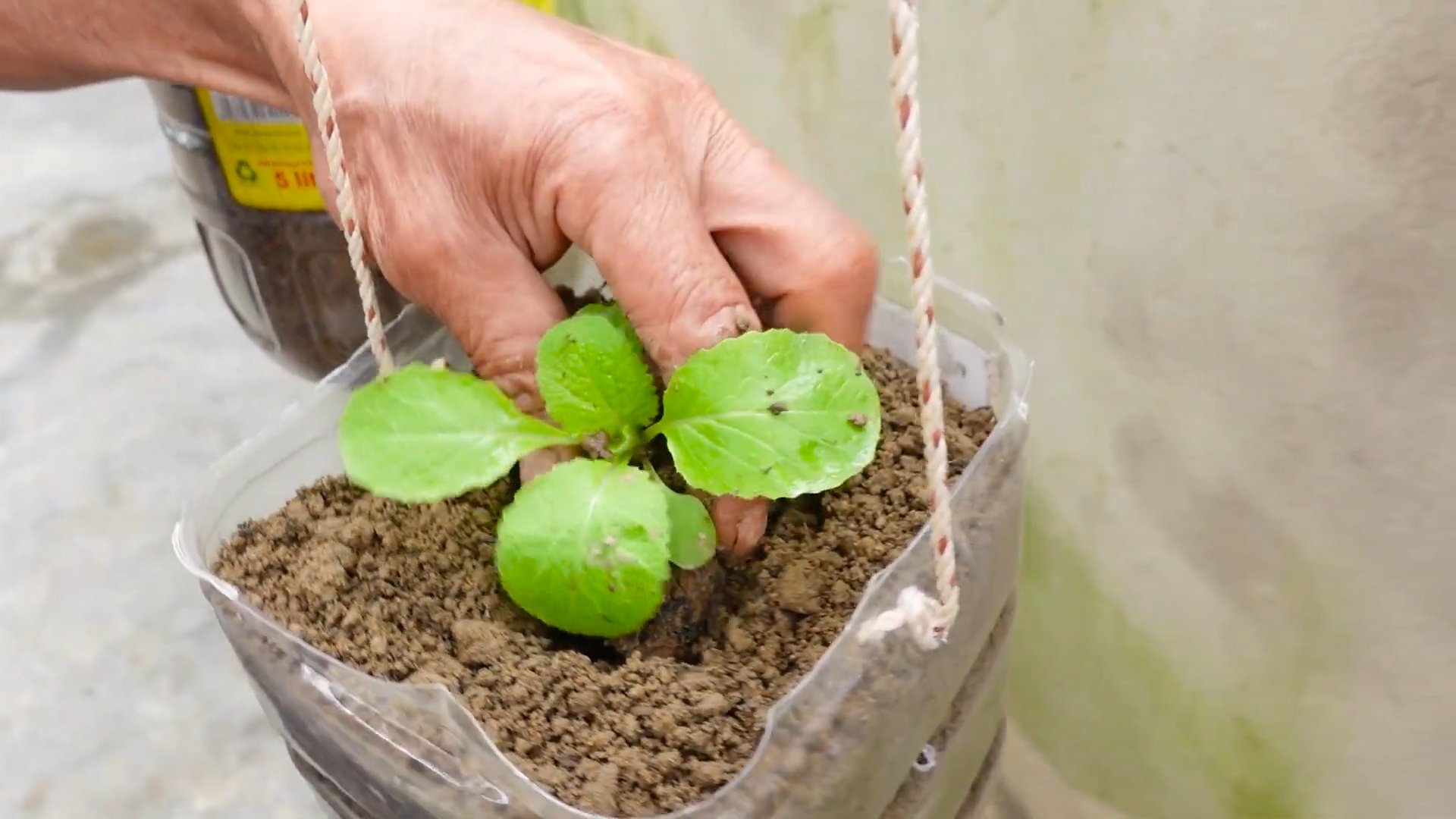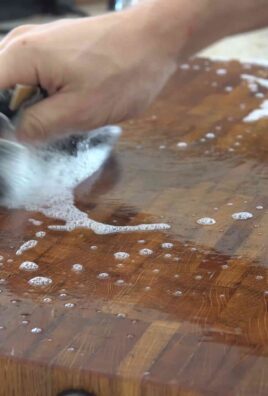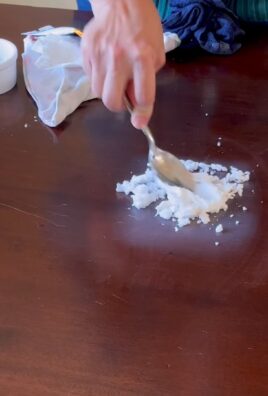Growing Napa Cabbage at Home might sound intimidating, but trust me, it’s more achievable than you think! Have you ever dreamt of strolling into your backyard and harvesting fresh, crisp Napa cabbage for a delicious stir-fry or a vibrant kimchi batch? Well, dream no more! This DIY guide is your passport to homegrown goodness, offering simple tricks and hacks to cultivate this versatile vegetable right in your own garden.
Napa cabbage, also known as Chinese cabbage, boasts a rich history deeply intertwined with Asian cuisine. For centuries, it has been a staple in dishes across China, Korea, and Japan, prized for its mild flavor and satisfying crunch. Beyond its culinary appeal, Napa cabbage is packed with essential vitamins and nutrients, making it a healthy and delicious addition to any diet.
But why bother growing Napa cabbage at home when you can simply buy it at the store? The answer is simple: freshness and control. Store-bought produce often travels long distances, losing flavor and nutrients along the way. By growing your own, you can enjoy the unparalleled taste of freshly harvested cabbage, knowing exactly what went into its cultivation. Plus, it’s incredibly rewarding to nurture a plant from seed to table! This DIY guide will equip you with the knowledge and confidence to successfully grow your own Napa cabbage, even if you’re a complete beginner. Let’s get started!

Growing Napa Cabbage at Home: A DIY Guide
Okay, so you want to grow your own Napa cabbage? Awesome! It’s surprisingly easy, and nothing beats the taste of fresh, homegrown veggies. I’ve been growing Napa cabbage for a few years now, and I’m excited to share my tips and tricks with you. Let’s get started!
Choosing the Right Variety and Starting Seeds
First things first, you need to decide which variety of Napa cabbage you want to grow. There are a few popular options, each with its own characteristics.
* ‘Blues’: This is a reliable and widely available variety known for its good disease resistance and tight heads.
* ‘China Pride’: This one matures quickly, making it a great choice if you’re in a hurry.
* ‘Optiko’: Another popular choice, ‘Optiko’ is known for its uniform heads and good flavor.
Once you’ve picked your variety, it’s time to start the seeds. You can either direct sow them into the garden or start them indoors. I prefer starting them indoors because it gives them a head start and protects them from pests.
Here’s how I do it:
1. Gather your supplies: You’ll need seed starting trays or small pots, seed starting mix (I recommend a peat-based mix), Napa cabbage seeds, and a spray bottle.
2. Fill the trays/pots with seed starting mix: Make sure the mix is moist but not soggy.
3. Sow the seeds: Plant 2-3 seeds per cell or pot, about ¼ inch deep.
4. Water gently: Use the spray bottle to mist the soil. You don’t want to dislodge the seeds.
5. Provide warmth and light: Place the trays/pots in a warm location (around 70-75°F) and provide plenty of light. A sunny windowsill or a grow light works well.
6. Keep the soil moist: Check the soil daily and water as needed to keep it consistently moist.
7. Thin the seedlings: Once the seedlings have their first true leaves (the second set of leaves), thin them to one plant per cell or pot. Choose the strongest seedling and snip off the others at the soil line.
Preparing the Garden Bed
While your seedlings are growing indoors, it’s time to prepare the garden bed. Napa cabbage needs well-drained soil that’s rich in organic matter.
* Choose a sunny location: Napa cabbage needs at least 6 hours of sunlight per day.
* Amend the soil: Dig in plenty of compost or well-rotted manure to improve drainage and fertility. I usually add a few inches of compost to the topsoil and mix it in thoroughly.
* Check the soil pH: Napa cabbage prefers a soil pH of 6.0 to 7.5. You can test your soil with a soil testing kit and amend it accordingly. If your soil is too acidic, add lime. If it’s too alkaline, add sulfur.
* Consider raised beds: If your soil is heavy clay or poorly drained, consider growing Napa cabbage in raised beds. This will improve drainage and make it easier to control the soil conditions.
Transplanting Seedlings and Spacing
Once your seedlings are about 4-6 weeks old and have a few sets of true leaves, they’re ready to be transplanted into the garden.
1. Harden off the seedlings: Before transplanting, you need to harden off the seedlings. This means gradually exposing them to outdoor conditions over a period of about a week. Start by placing them outside in a sheltered location for a few hours each day, gradually increasing the amount of time they spend outdoors.
2. Choose a cloudy day: Transplanting on a cloudy day will help reduce stress on the seedlings.
3. Dig holes: Dig holes that are slightly larger than the root balls of the seedlings.
4. Space the plants: Space the plants about 12-18 inches apart in rows that are 24-36 inches apart. This will give them enough room to grow and mature.
5. Gently remove the seedlings from their containers: Be careful not to damage the roots.
6. Place the seedlings in the holes: Make sure the top of the root ball is level with the soil surface.
7. Fill in the holes with soil: Gently firm the soil around the seedlings.
8. Water thoroughly: Water the seedlings well after transplanting.
Caring for Your Napa Cabbage Plants
Now that your Napa cabbage plants are in the ground, it’s important to provide them with the care they need to thrive.
* Watering: Napa cabbage needs consistent moisture, especially during hot, dry weather. Water deeply and regularly, aiming for about 1 inch of water per week. Avoid overhead watering, as this can promote disease. I like to use a soaker hose or drip irrigation to water my plants.
* Fertilizing: Napa cabbage is a heavy feeder, so it’s important to fertilize regularly. I like to use a balanced organic fertilizer, such as fish emulsion or compost tea. Apply fertilizer every 2-3 weeks, following the instructions on the package.
* Weeding: Keep the garden bed free of weeds, as they can compete with the Napa cabbage plants for nutrients and water. Hand-pull weeds regularly or use a hoe to cultivate the soil.
* Mulching: Apply a layer of mulch around the plants to help retain moisture, suppress weeds, and regulate soil temperature. I like to use straw, shredded leaves, or wood chips.
* Pest Control: Napa cabbage is susceptible to a few common pests, including cabbage worms, aphids, and flea beetles.
* Cabbage worms: These are green caterpillars that feed on the leaves of cabbage plants. You can control them by hand-picking them off the plants or by using Bacillus thuringiensis (Bt), a natural insecticide.
* Aphids: These are small, sap-sucking insects that can weaken plants. You can control them by spraying them with a strong stream of water or by using insecticidal soap.
* Flea beetles: These are small, jumping beetles that chew small holes in the leaves of cabbage plants. You can control them by covering the plants with row covers or by using insecticidal soap.
* Disease Prevention: Napa cabbage can also be susceptible to a few common diseases, including clubroot and black rot.
* Clubroot: This is a soilborne disease that causes the roots of cabbage plants to swell and become distorted. You can prevent clubroot by amending the soil with lime to raise the pH and by practicing crop rotation.
* Black rot: This is a bacterial disease that causes dark lesions on the leaves of cabbage plants. You can prevent black rot by planting disease-resistant varieties and by avoiding overhead watering.
Harvesting Your Napa Cabbage
Napa cabbage is typically ready to harvest in 70-80 days from transplanting. The heads should be firm and compact.
1. Check for firmness: Gently squeeze the head of the cabbage. If it feels firm and solid, it’s ready to harvest.
2. Cut the head: Use a sharp knife to cut the head of the cabbage from the plant, leaving a few outer leaves attached.
3. Store the cabbage: Store the cabbage in the refrigerator for up to a few weeks.
Troubleshooting Common Problems
Even with the best care, you might encounter some problems while growing Napa cabbage. Here are a few common issues and how to address them:
* Heads not forming: This can be caused by a lack of nutrients, insufficient sunlight, or hot weather. Make sure you’re fertilizing regularly, providing plenty of sunlight, and watering consistently. If the weather is hot, try shading the plants during the hottest part of the day.
* Bolting (going to seed): This can be caused by stress, such as hot weather or inconsistent watering. Try to provide consistent moisture and protect the plants from extreme temperatures.
* Pest infestations: As mentioned earlier, Napa cabbage is susceptible to a few common pests. Monitor your plants regularly and take action as soon as you notice any signs of infestation.
Enjoying Your Homegrown Napa Cabbage
Now that you’ve harvested your Napa cabbage, it’s time to enjoy it! There are so many delicious ways to use it.
* Salads: Napa cabbage is a great addition to salads. Its mild flavor and crisp texture make it a perfect complement to other vegetables and dressings.
* Slaws: Napa cabbage is also a key ingredient in many slaws. Try it in a classic coleslaw or experiment with different flavors and dressings.
* Stir-fries: Napa cabbage is a versatile vegetable that can be used in stir-fries. It cooks quickly and adds a nice crunch to the dish.
* Soups and stews: Napa cabbage can also be

Conclusion
So, there you have it! Growing Napa cabbage at home, while it might seem daunting at first, is a surprisingly rewarding experience. Forget those limp, overpriced heads at the grocery store. Imagine crisp, vibrant Napa cabbage, bursting with freshness, ready to be transformed into delicious kimchi, stir-fries, or salads, all grown with your own two hands. This DIY approach isn’t just about saving money; it’s about connecting with your food, understanding its journey from seed to table, and enjoying the unparalleled flavor of homegrown produce.
The benefits extend beyond just taste and cost savings. By growing your own Napa cabbage, you have complete control over the growing process. You can choose organic methods, avoiding harmful pesticides and herbicides, ensuring that you and your family are consuming the healthiest possible food. Plus, gardening is a fantastic stress reliever and a great way to get some fresh air and exercise.
But the real magic lies in the flavor. Homegrown Napa cabbage has a sweetness and tenderness that you simply can’t find in store-bought varieties. It’s a difference you can taste, a difference that will elevate your culinary creations to a whole new level.
Don’t be afraid to experiment! Try different varieties of Napa cabbage to find your favorite. Some popular choices include ‘Blues,’ known for its disease resistance, and ‘Optiko,’ which matures quickly. You can also adjust the planting schedule to extend your harvest season. Consider succession planting, sowing new seeds every few weeks, to ensure a continuous supply of fresh Napa cabbage throughout the growing season.
For those in warmer climates, try growing Napa cabbage in the fall or winter to avoid the heat that can cause bolting. If you’re short on space, consider growing Napa cabbage in containers. Just make sure to choose a large container with good drainage and provide plenty of sunlight.
We encourage you to take the plunge and try growing Napa cabbage at home. It’s a project that’s both satisfying and delicious. And once you’ve tasted the difference between homegrown and store-bought, you’ll never go back.
So, grab some seeds, prepare your soil, and get ready to experience the joy of growing your own Napa cabbage. We’re confident that you’ll be amazed by the results. And most importantly, don’t forget to share your experiences with us! We’d love to hear about your successes, your challenges, and your favorite ways to use your homegrown Napa cabbage. Share your photos and tips in the comments below. Let’s build a community of Napa cabbage enthusiasts!
Frequently Asked Questions (FAQ)
What is Napa cabbage and why should I grow it?
Napa cabbage, also known as Chinese cabbage, is a type of leafy vegetable that’s widely used in Asian cuisine. It’s milder and sweeter than regular cabbage, making it a versatile ingredient for salads, stir-fries, kimchi, and more. Growing your own Napa cabbage allows you to enjoy fresher, more flavorful produce, control the growing process (avoiding pesticides), and save money compared to buying it at the store. Plus, gardening is a rewarding and therapeutic activity!
When is the best time to plant Napa cabbage?
The best time to plant Napa cabbage depends on your climate. In general, it’s a cool-season crop that thrives in temperatures between 60°F and 70°F (15°C and 21°C). For spring crops, start seeds indoors 4-6 weeks before the last expected frost. Transplant seedlings outdoors after the danger of frost has passed. For fall crops, sow seeds directly into the garden in late summer or early fall, about 6-8 weeks before the first expected frost. Avoid planting during the hottest months of summer, as high temperatures can cause bolting (premature flowering).
What kind of soil does Napa cabbage need?
Napa cabbage prefers well-drained, fertile soil that’s rich in organic matter. Amend your soil with compost or well-rotted manure before planting to improve drainage and fertility. A slightly acidic soil pH of 6.0 to 6.8 is ideal. You can test your soil pH using a home testing kit or by sending a sample to your local agricultural extension office.
How much sunlight does Napa cabbage need?
Napa cabbage needs at least 6 hours of sunlight per day to thrive. Choose a sunny location in your garden that receives plenty of direct sunlight. If you’re growing Napa cabbage in containers, make sure to place them in a sunny spot.
How often should I water Napa cabbage?
Napa cabbage needs consistent moisture to grow properly. Water deeply and regularly, especially during dry periods. Aim to keep the soil consistently moist but not waterlogged. Mulching around the plants can help retain moisture and suppress weeds.
What are some common pests and diseases that affect Napa cabbage?
Napa cabbage can be susceptible to several pests and diseases, including cabbage worms, aphids, flea beetles, clubroot, and downy mildew. To prevent pest and disease problems, practice good garden hygiene, such as removing plant debris and weeds. Use row covers to protect plants from pests. Inspect your plants regularly for signs of pests or diseases and take action promptly. Organic pest control methods, such as insecticidal soap or neem oil, can be effective for controlling many common pests. Choose disease-resistant varieties of Napa cabbage to minimize the risk of disease problems.
How do I harvest Napa cabbage?
Napa cabbage is ready to harvest when the heads are firm and compact. The exact time to harvest will depend on the variety and growing conditions, but generally, it takes about 70-80 days from seed to harvest. To harvest, cut the head at the base with a sharp knife.
Can I grow Napa cabbage in containers?
Yes, you can grow Napa cabbage in containers. Choose a large container that’s at least 12 inches in diameter and has good drainage. Use a high-quality potting mix that’s rich in organic matter. Water regularly and fertilize every few weeks with a balanced fertilizer.
How do I store Napa cabbage?
Napa cabbage can be stored in the refrigerator for several weeks. Wrap the head in a damp paper towel and place it in a plastic bag. You can also ferment Napa cabbage to make kimchi, which can be stored for several months.
What are some ways to use Napa cabbage in cooking?
Napa cabbage is a versatile ingredient that can be used in a variety of dishes. It can be eaten raw in salads, stir-fried, steamed, or used to make kimchi. It’s also a great addition to soups and stews. Some popular Napa cabbage recipes include kimchi, stir-fried Napa cabbage with garlic and ginger, Napa cabbage slaw, and Napa cabbage soup.
How can I prevent my Napa cabbage from bolting?
Bolting, or premature flowering, can occur when Napa cabbage is exposed to high temperatures or stress. To prevent bolting, plant Napa cabbage at the right time of year, avoid planting during the hottest months of summer, and provide consistent moisture. Choose bolt-resistant varieties of Napa cabbage. Mulching around the plants can also help keep the soil cool and prevent bolting.
What are some good companion plants for Napa cabbage?
Companion planting can help improve the growth and health of your Napa cabbage. Some good companion plants for Napa cabbage include dill, chamomile, rosemary, thyme, and marigolds. These plants can help repel pests and attract beneficial insects. Avoid planting Napa cabbage near members of the brassica family, such as broccoli, cauliflower, and kale, as they can compete for nutrients and attract the same pests.





Leave a Comment